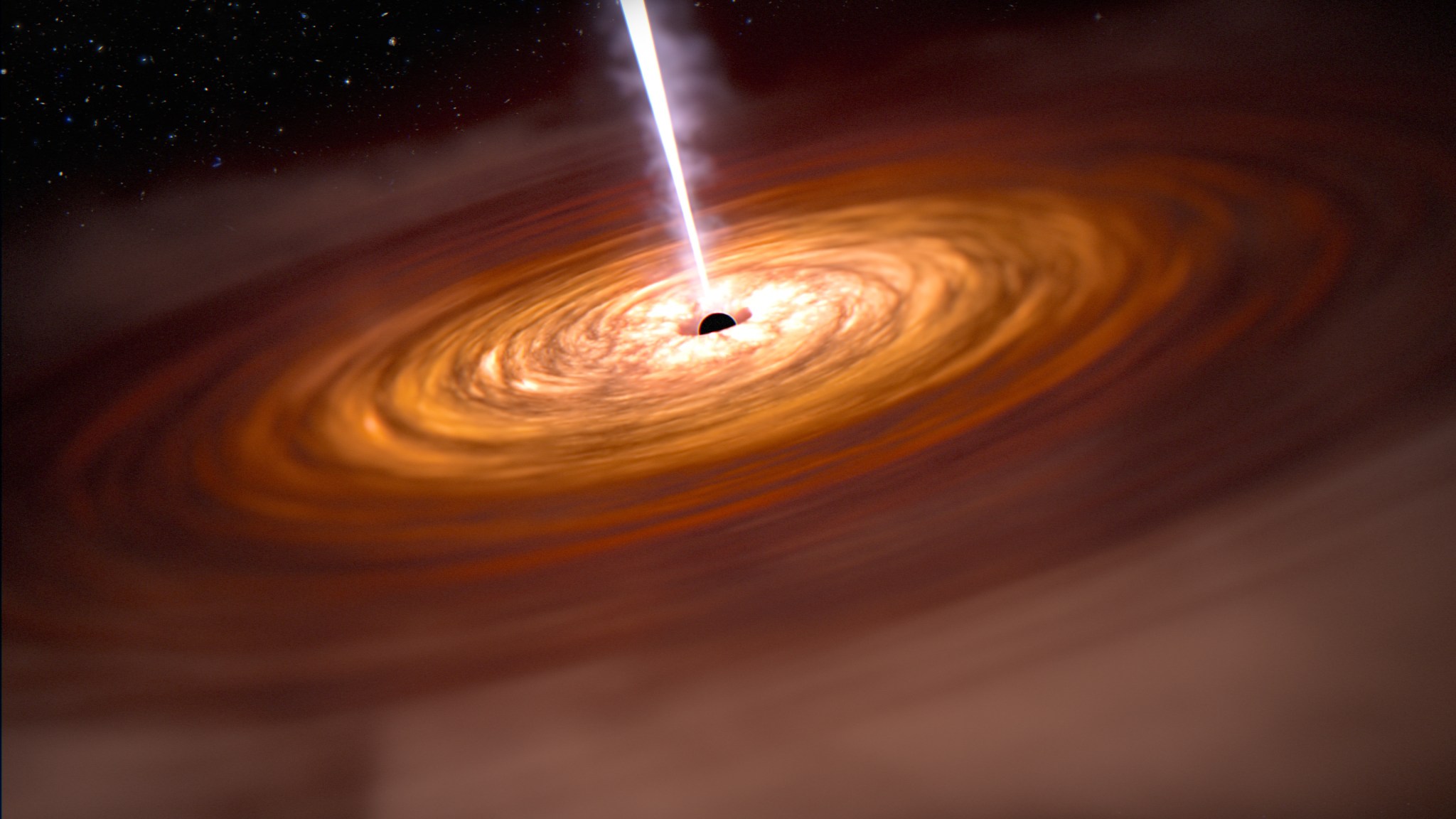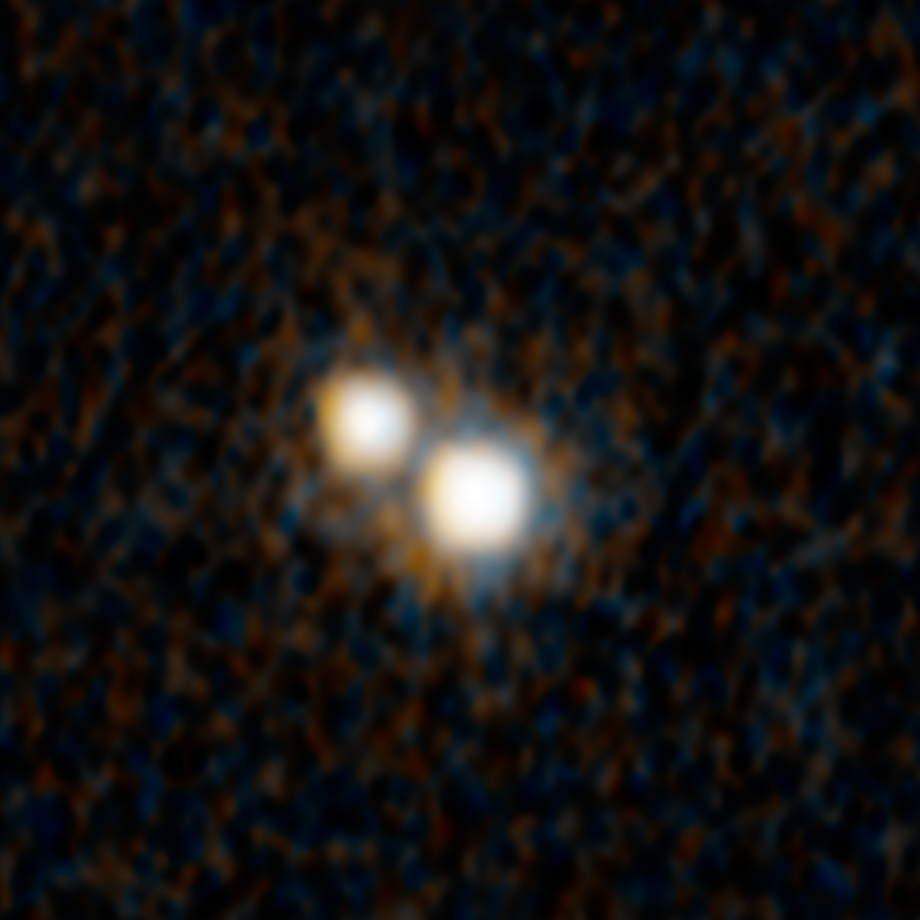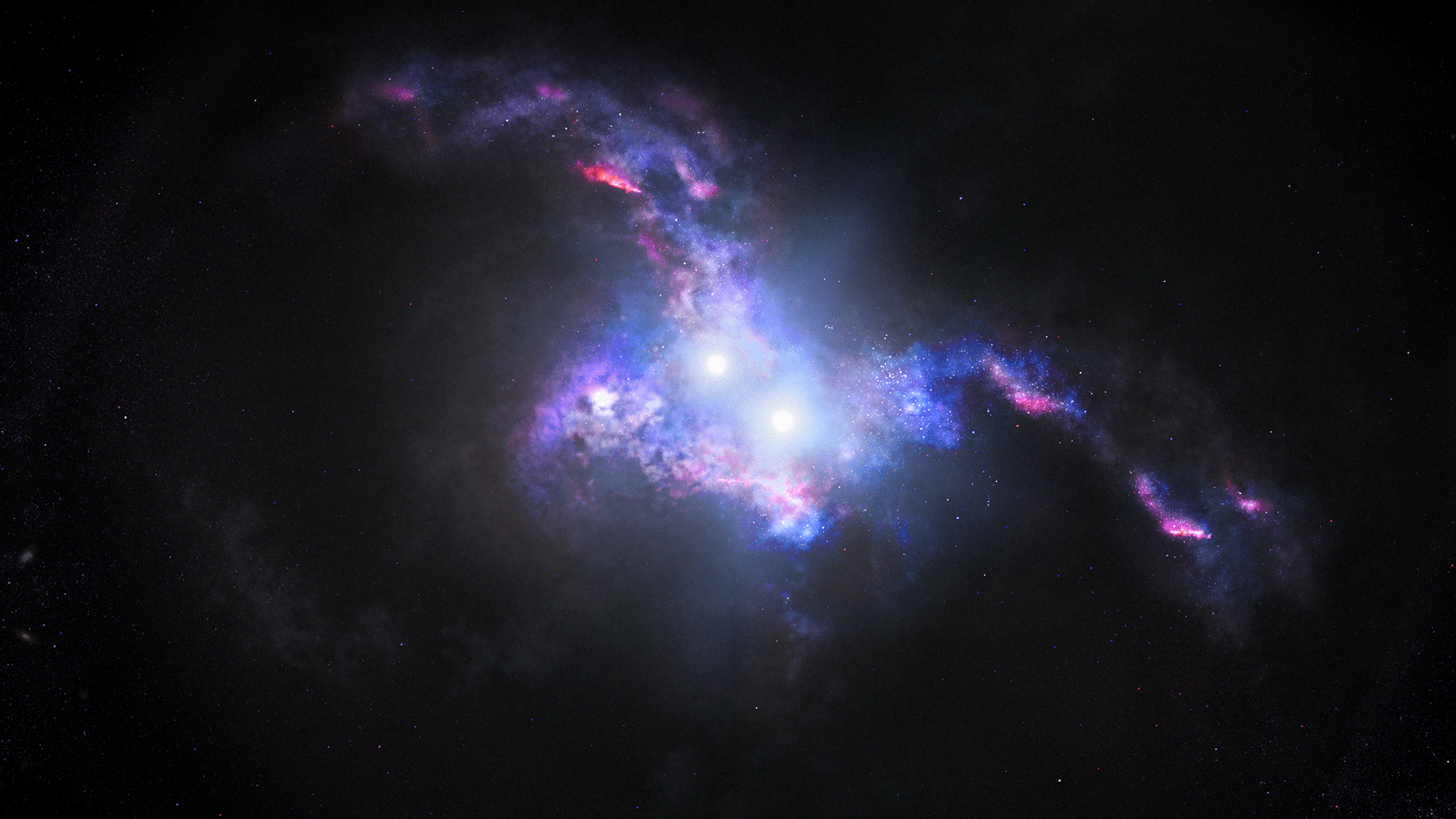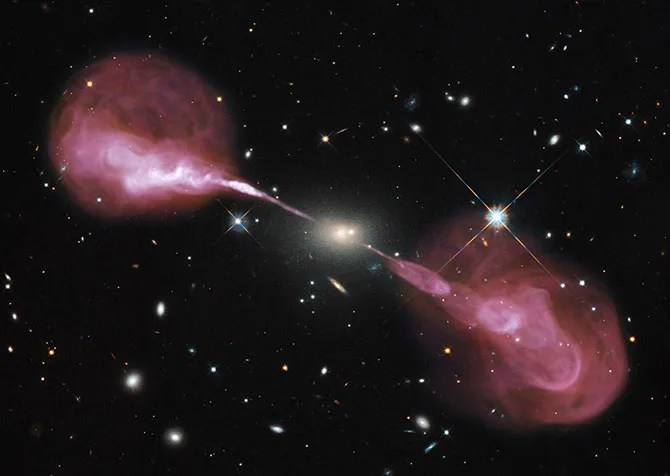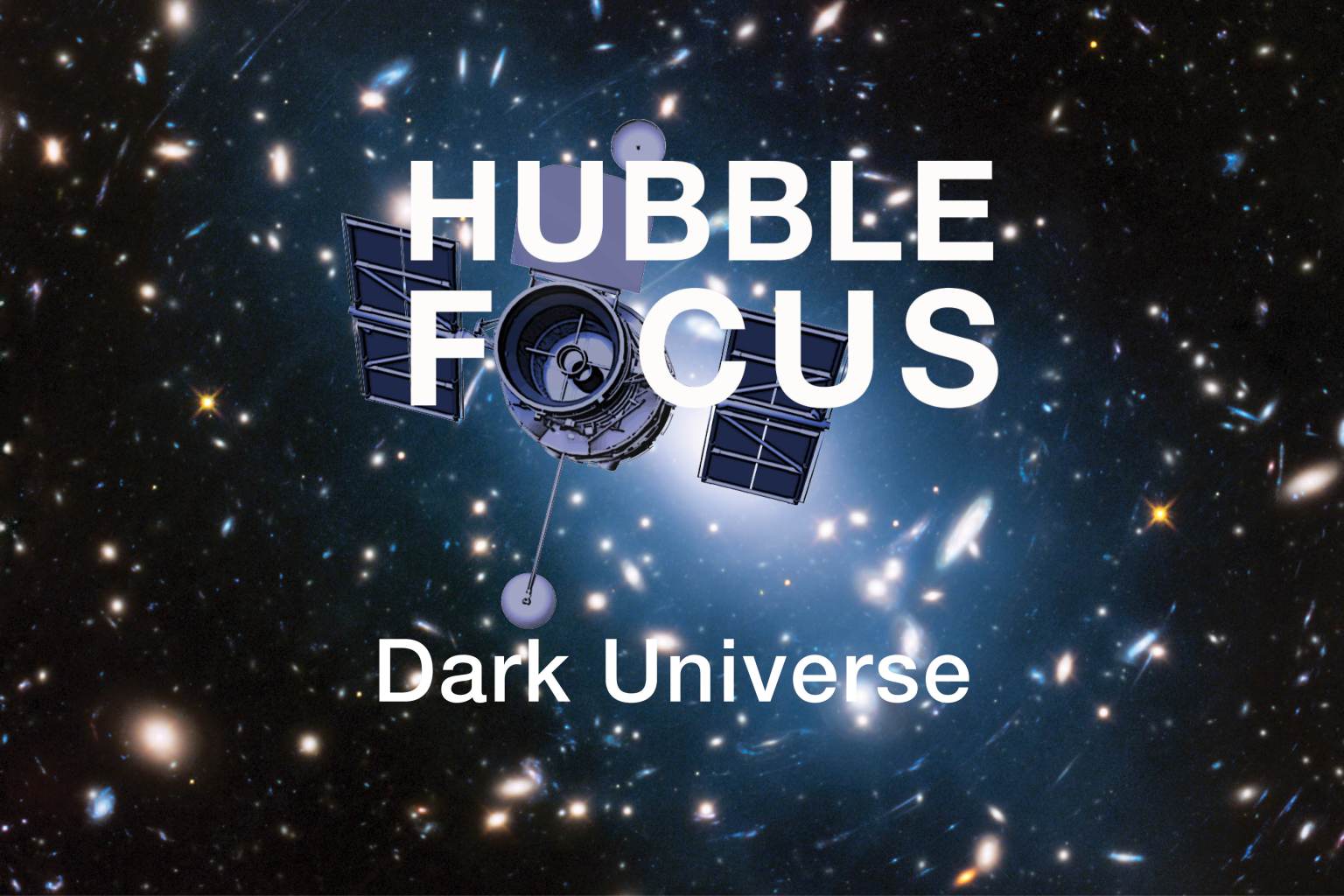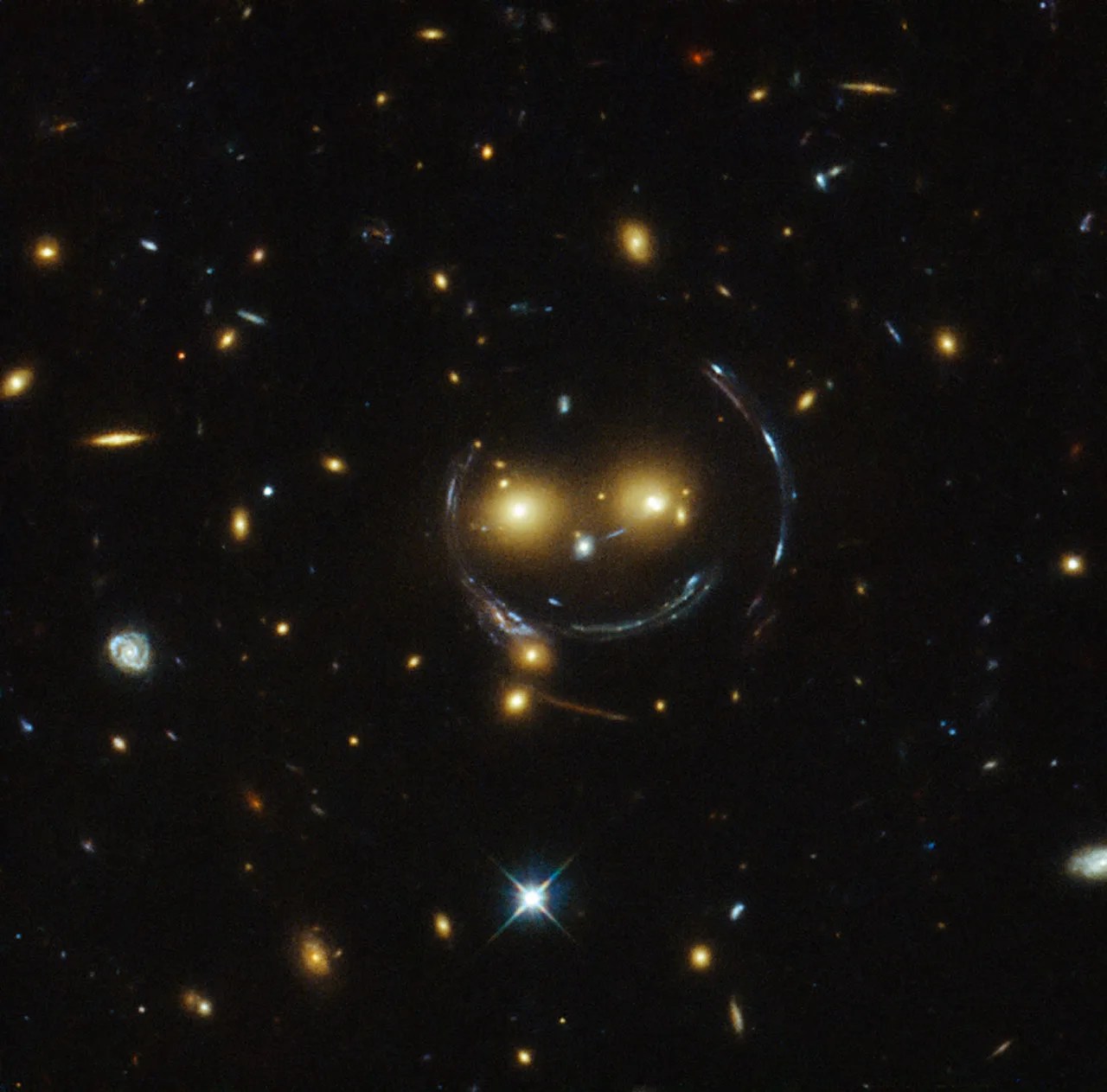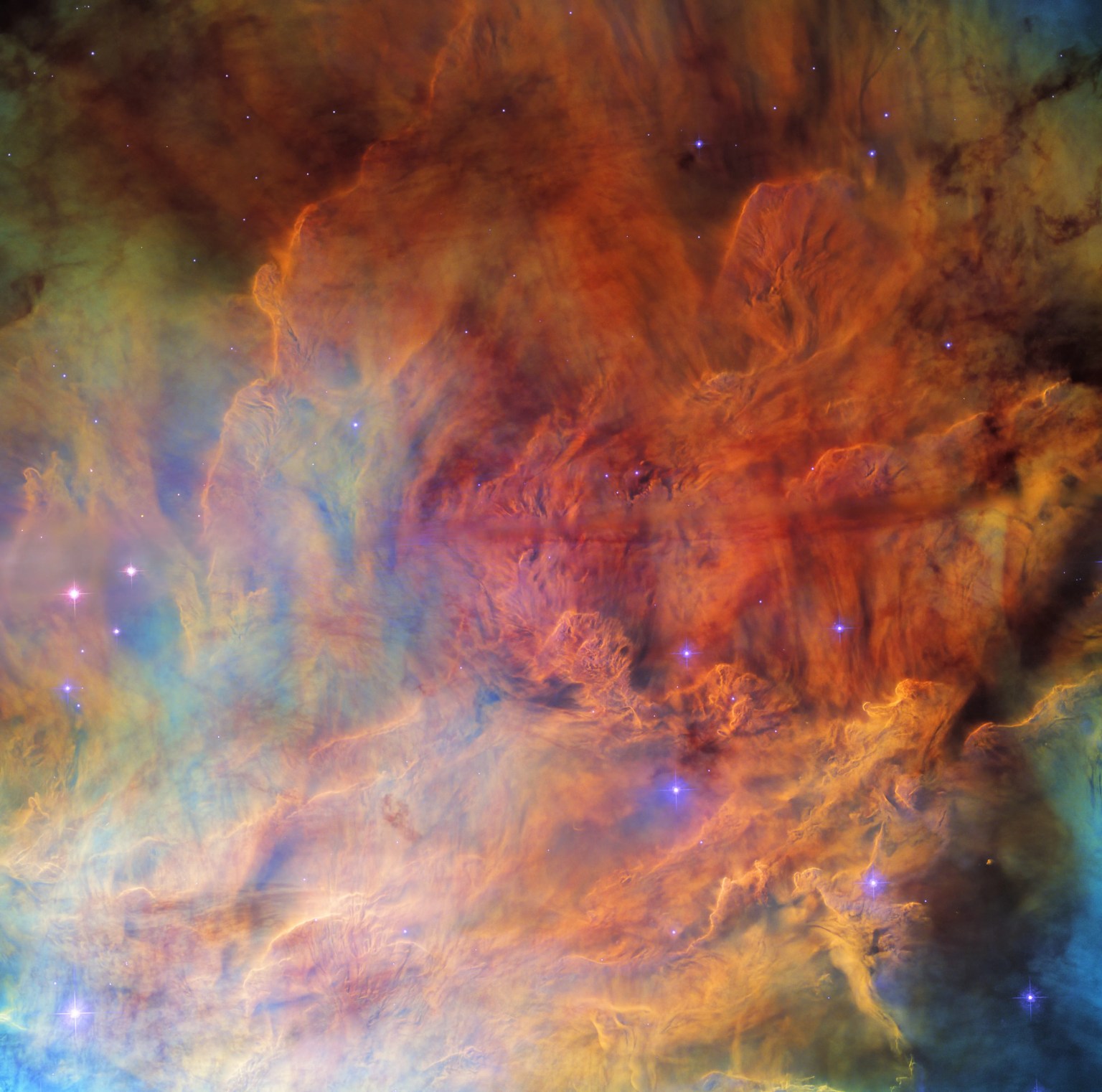Picture a region about the size of the solar system, pouring out 100 to 1,000 times as much light as an entire galaxy containing a hundred billion stars, generating a glow that outshines its host galaxy and everything in it.
These objects are called quasars. They are distant galaxies whose incredibly bright cores are powered by supermassive black holes. Quasars have been found with luminosities between 10 to 100,000 times that of our Milky Way galaxy, generated from an area just a few light-days to a few light-years across.
Quasars occur when immense amounts of matter fall into a supermassive black hole, spiraling around it in the form of a disk before entering. This “accretion disk” is subjected to extreme gravitational and frictional forces, causing the gas and dust to heat up to millions of degrees and become luminous, blasting out dazzling jets of material into the universe. Together, the jets and glowing disk outshine their host galaxies.
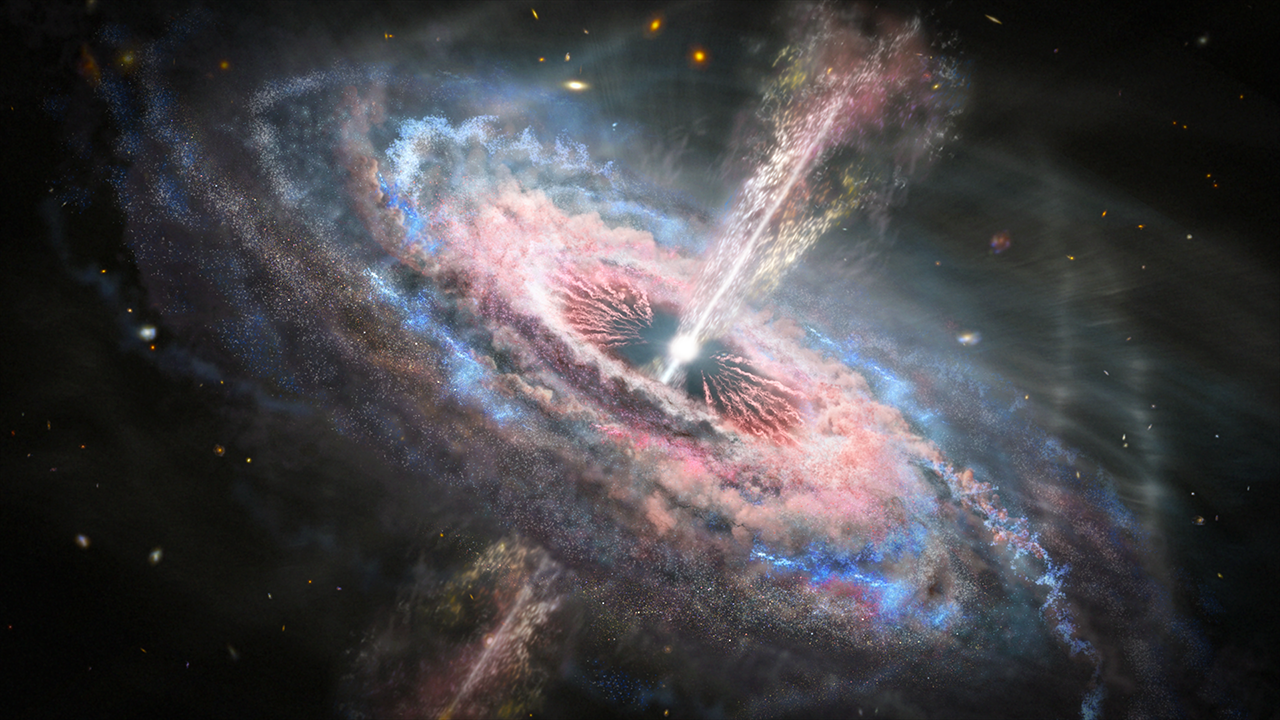
The closest quasars to Earth are hundreds of millions of light-years away. Because of how much time it takes light to travel across the vastness of space, this means that we see these galaxies as they were in the earlier universe. Because quasars require so much matter to spark their extraordinary radiation, astronomers think they occur when galaxies merge, which happened much more frequently in the early universe.
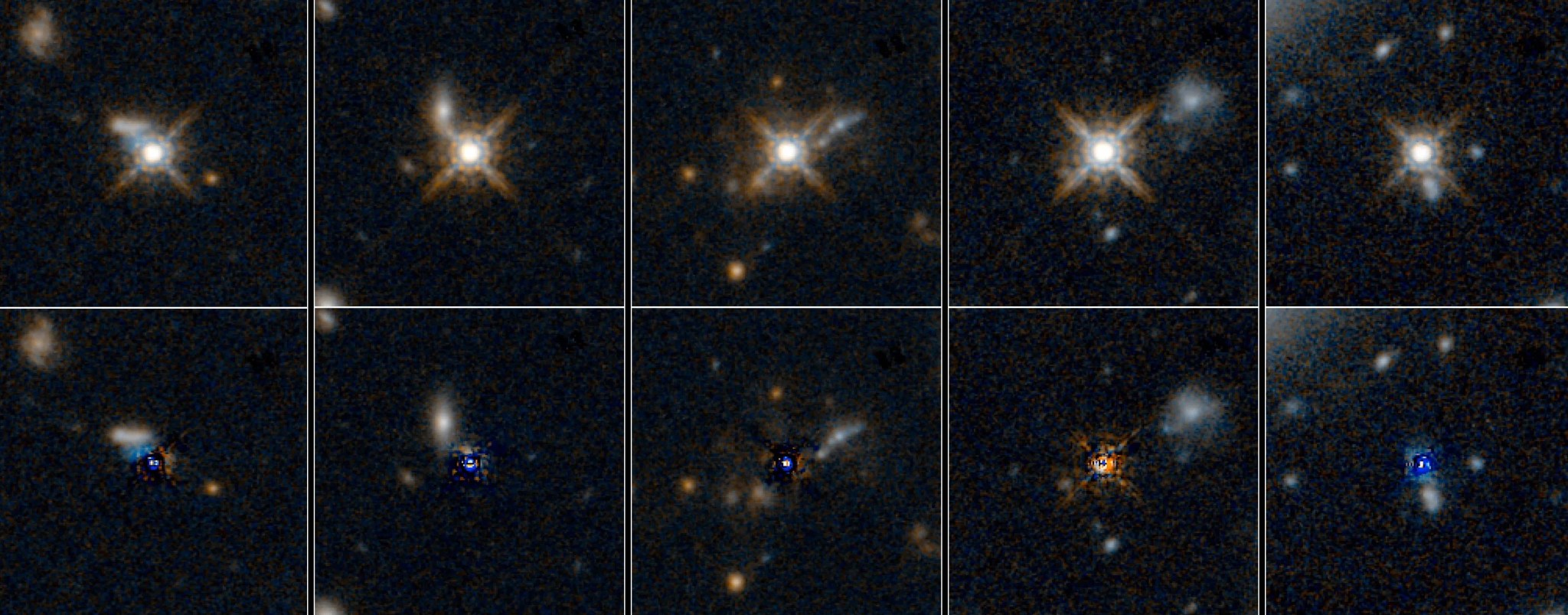
Quasars were first found in the 1950s and 60s and labeled “quasi-stellar radio sources,” because they looked like stars but emitted radio waves. Hubble’s sharp vision was used to identify the shapes of galaxies containing quasars. The telescope found quasars in both spiral and elliptical galaxies, colliding and ― surprisingly ― seemingly undisturbed, which may indicate a subtler mechanism for feeding a supermassive black hole than galaxy collision.
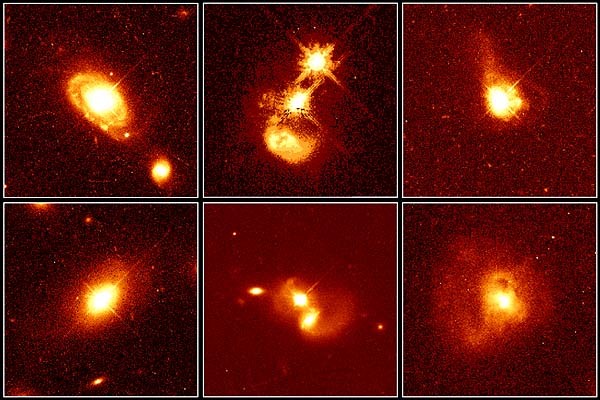
Today quasars are classified as a type of object known as an Active Galactic Nucleus (AGN), a galaxy with an extremely bright core caused by the light emitted as matter falls into a central supermassive black hole. Quasars are the most powerful type of AGN.
Among its quasar observations, in 2019 Hubble found the brightest quasar known in the early universe by using a combination of its sharp vision and a natural gravitational lens in space to see the distant object. Gravitational lenses occur when the gravity of a massive object ― in this case another galaxy ― warps and magnifies the light of an object behind it. The quasar’s brightness is equivalent to about 600 trillion Suns and the supermassive black hole powering it is several hundred million times as massive as our Sun, but even with gravitational lensing making it three times as large and 50 times as bright, only Hubble had the ability to resolve it.
Hubble continues to explore quasars and their galactic homes, helping refine our understanding of these cosmic beacons.




























